site search
online catalog
NON-REGULATION SILVER GRIPPED PRESENTATION SWORD BY SCHUYLER, HARTLEY & GRAHAM - LT. JAMES MOFFAT, 16TH NEW YORK CAVALRY

Hover to zoom



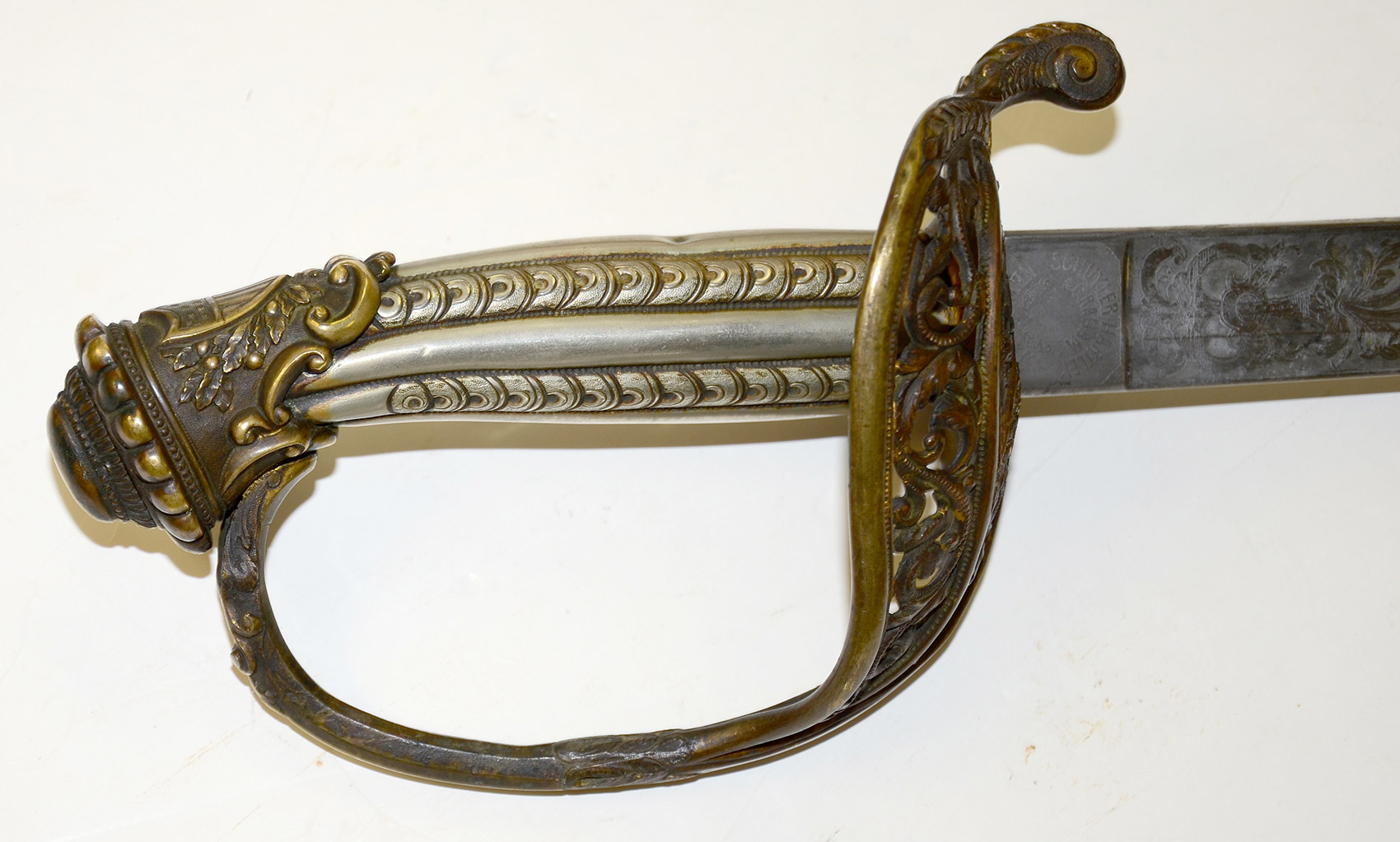
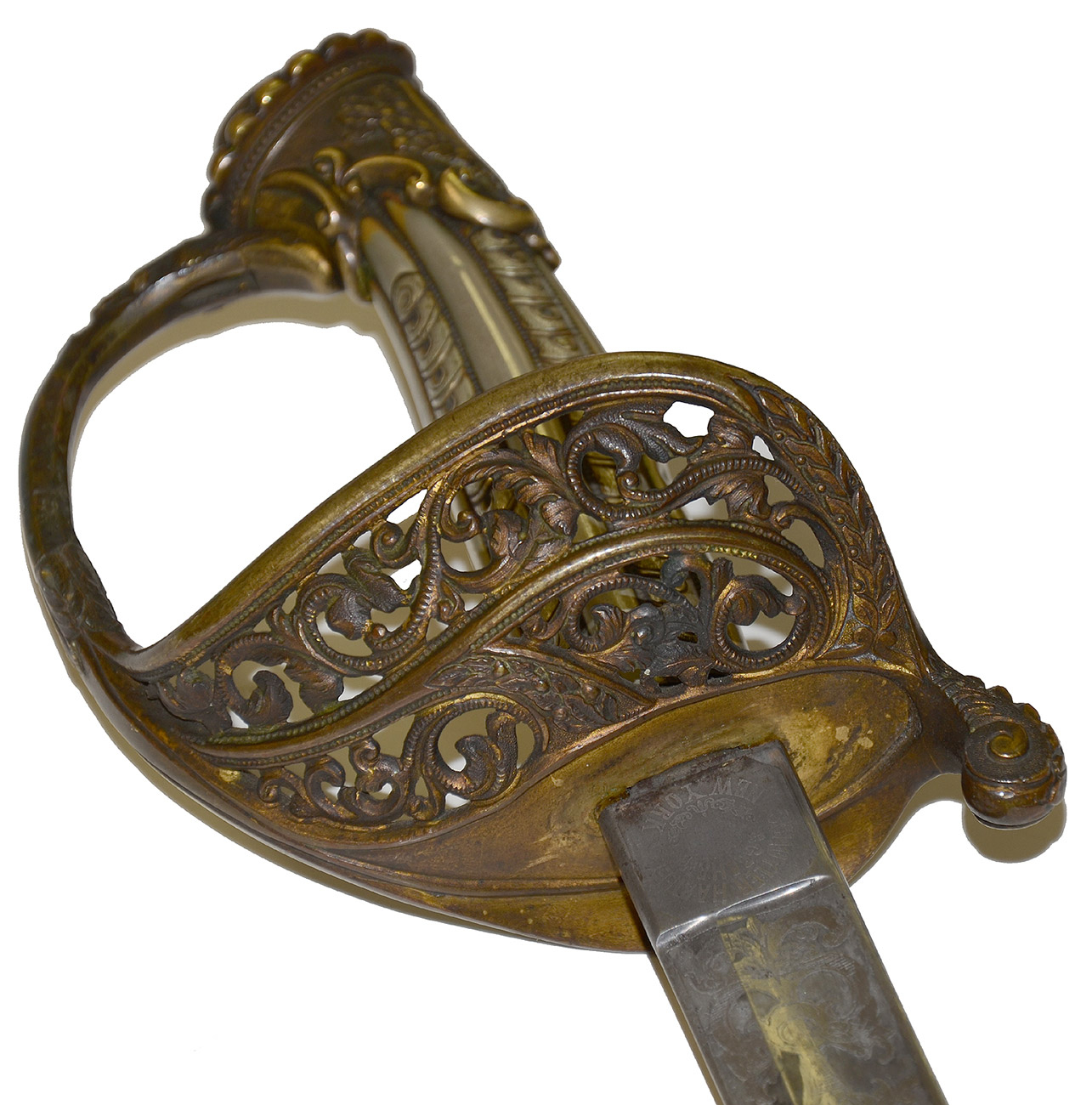
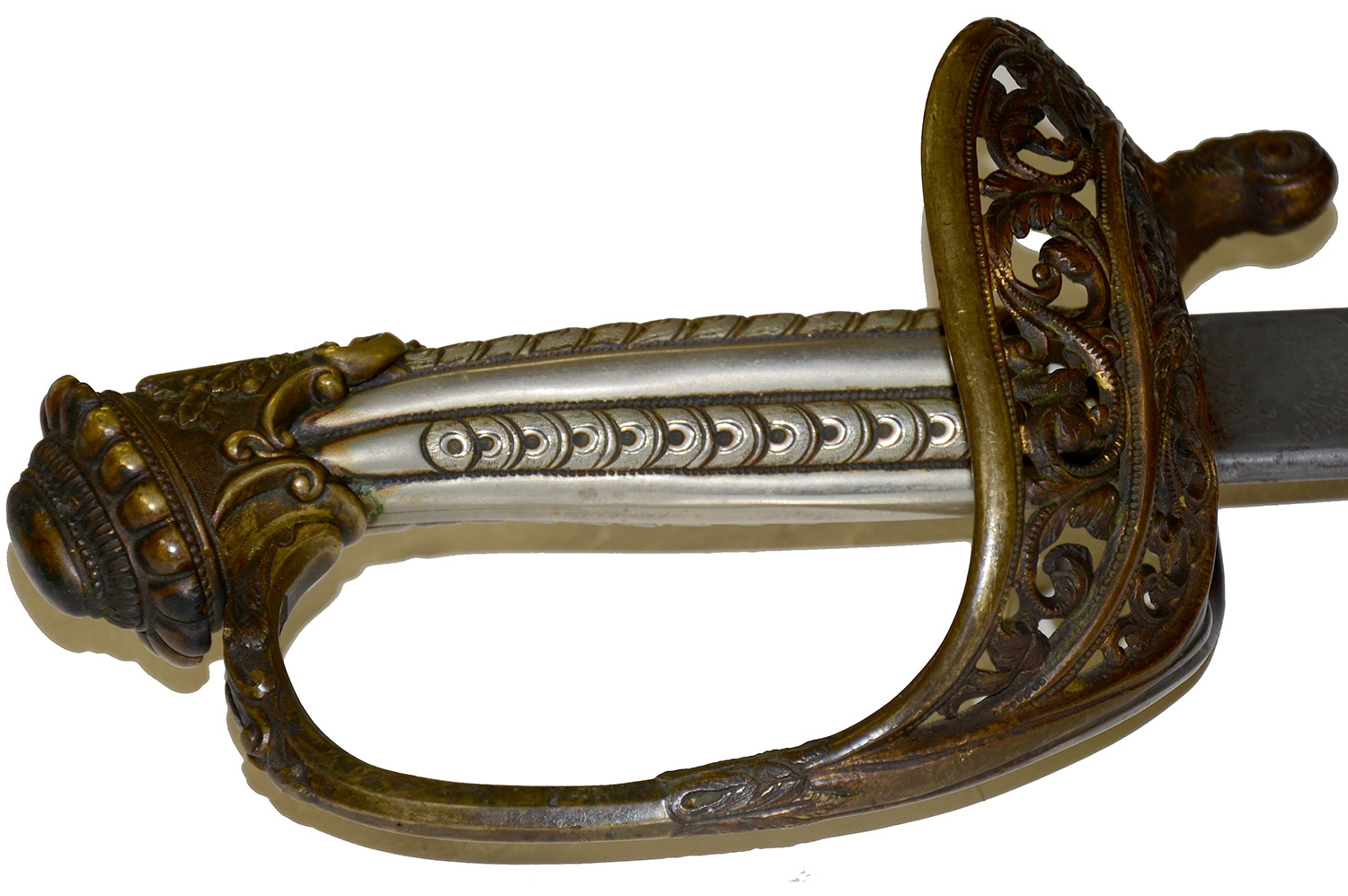
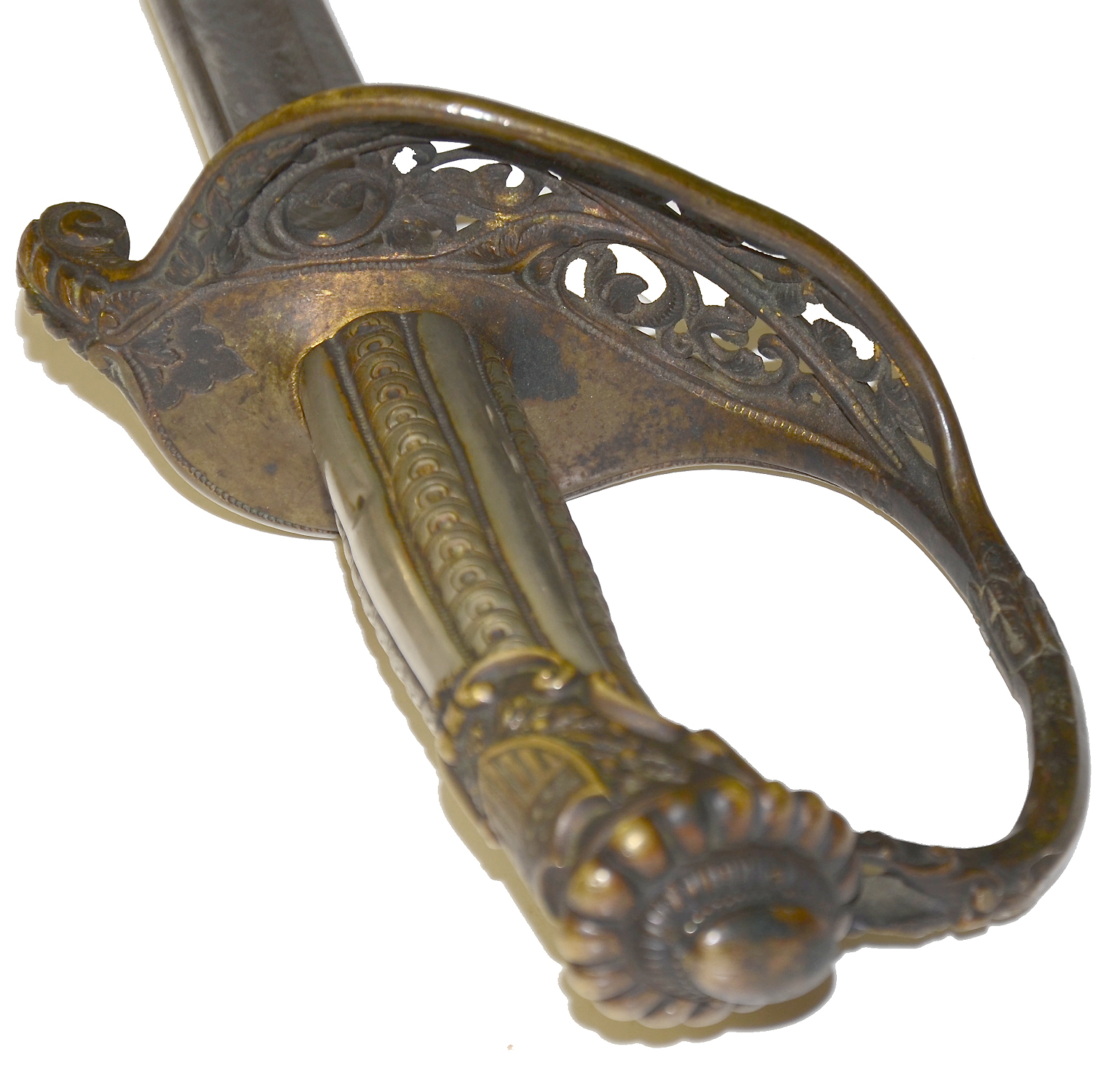
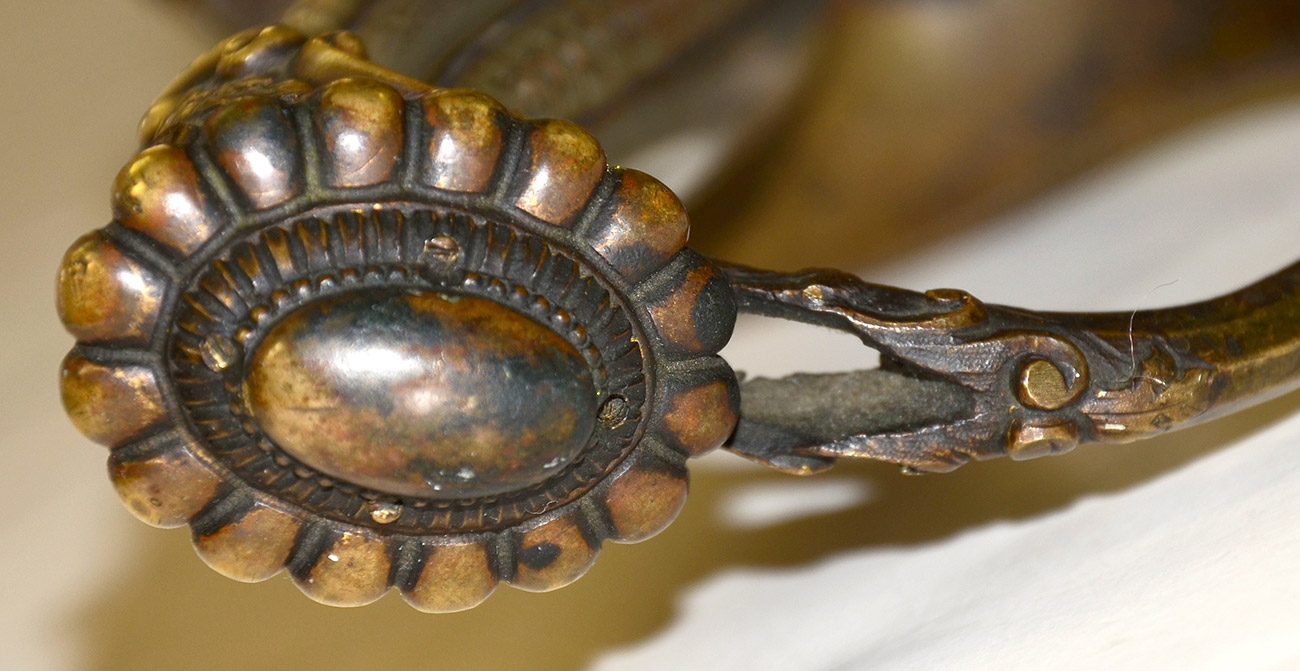
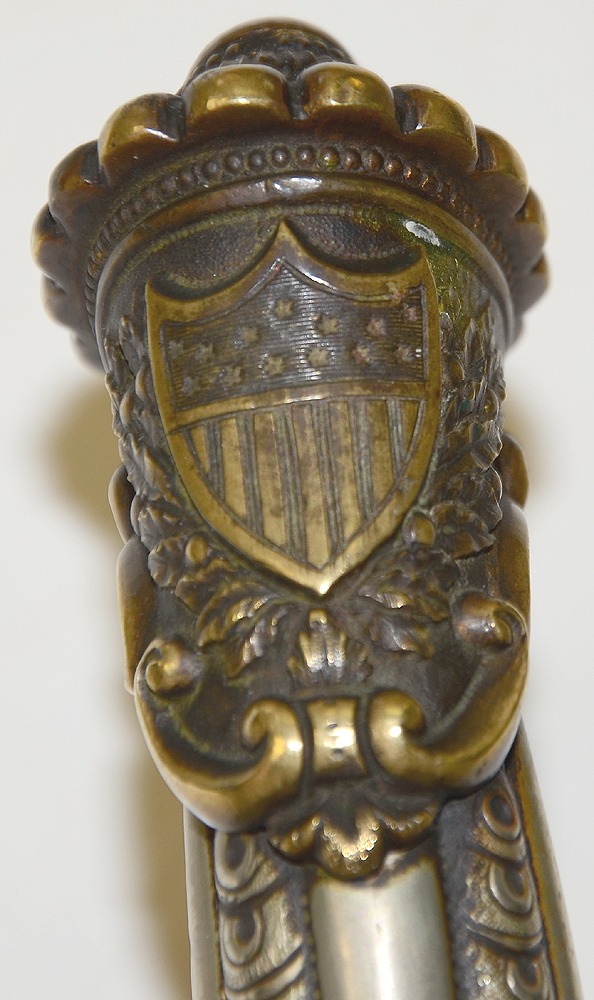
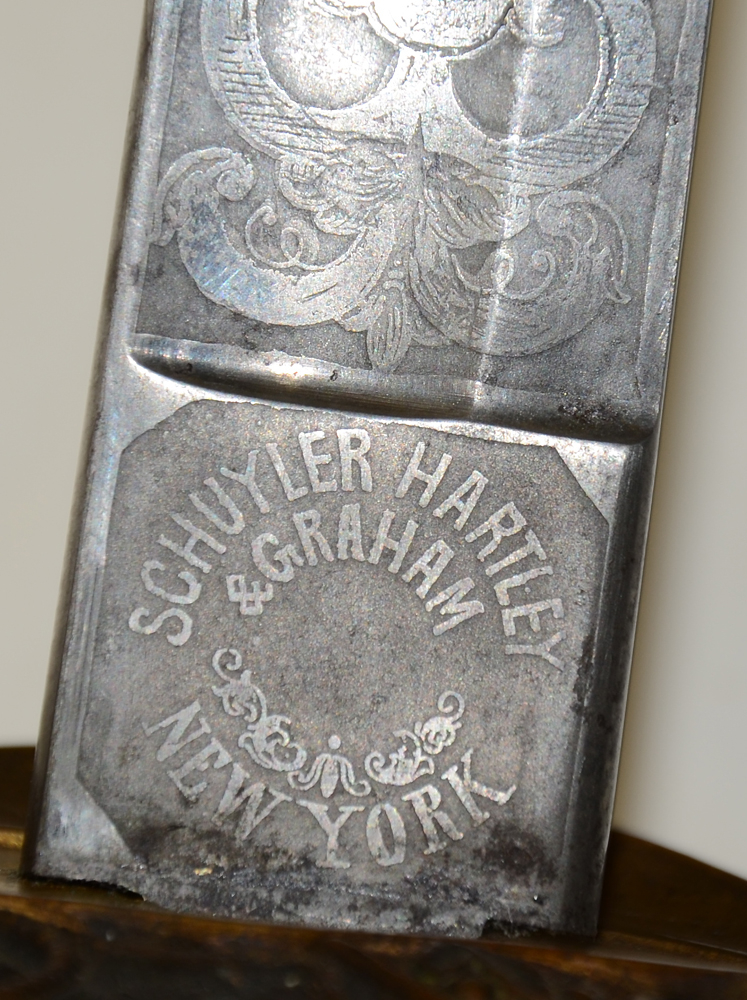
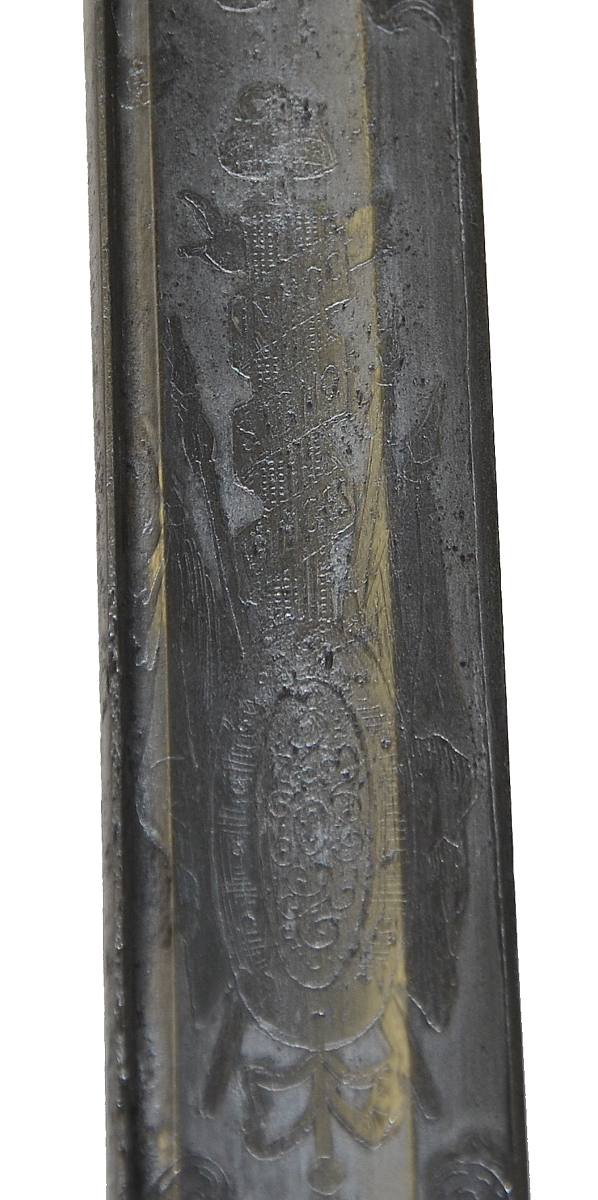
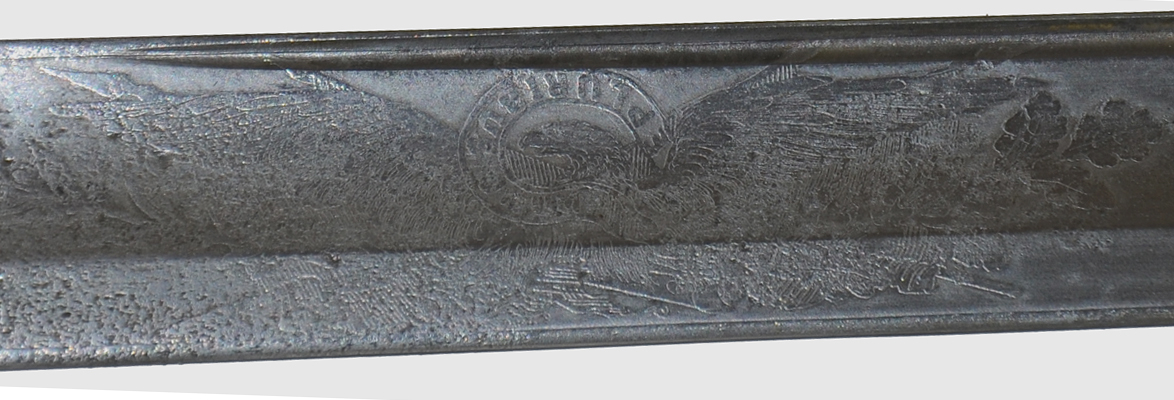

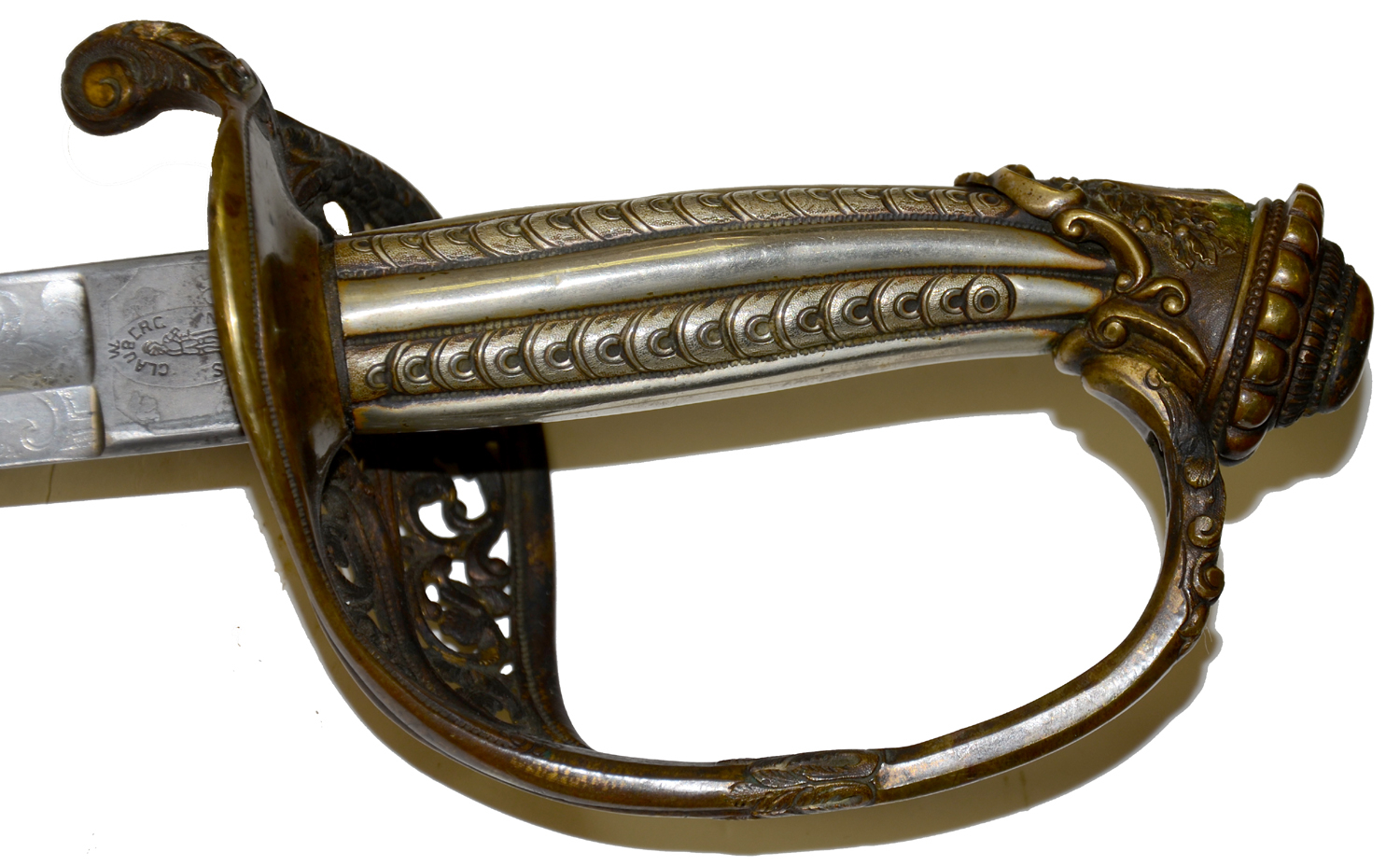
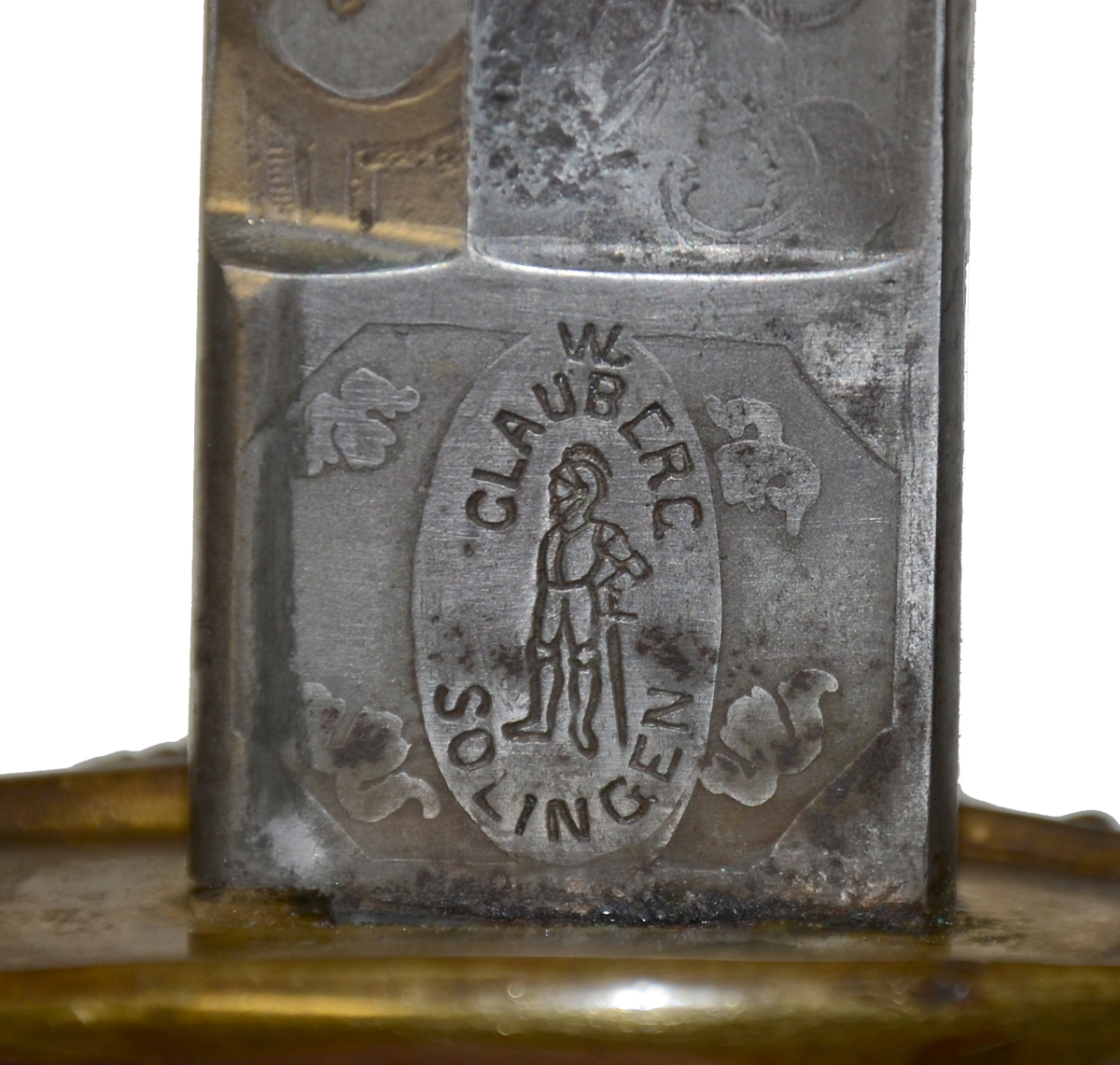

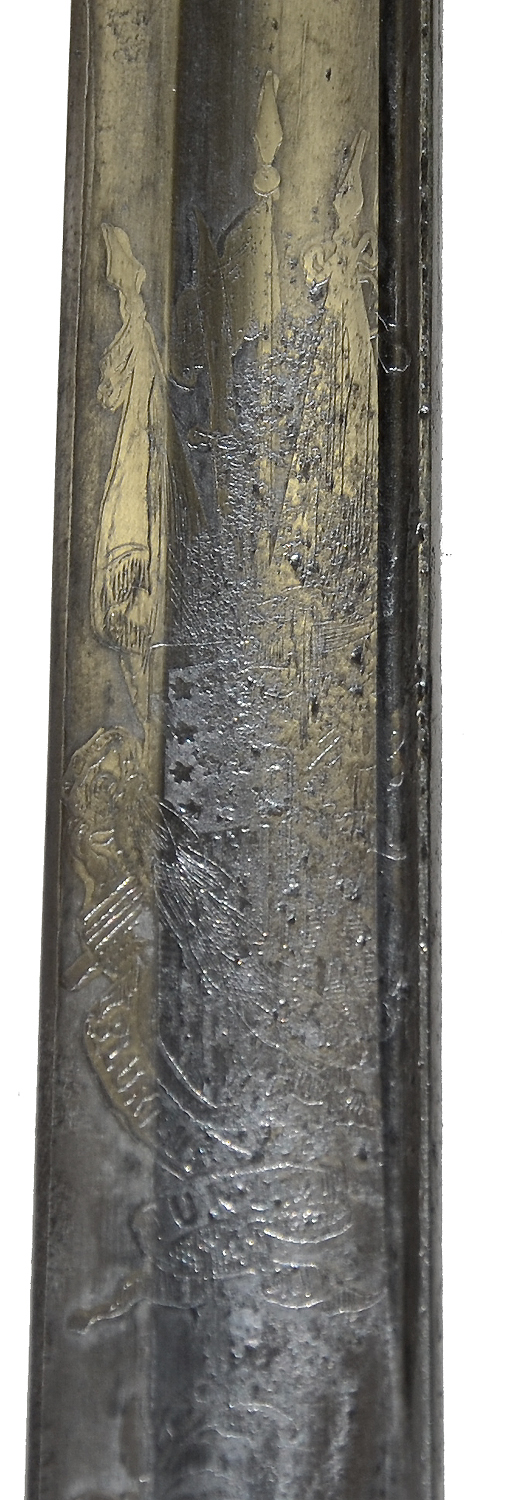
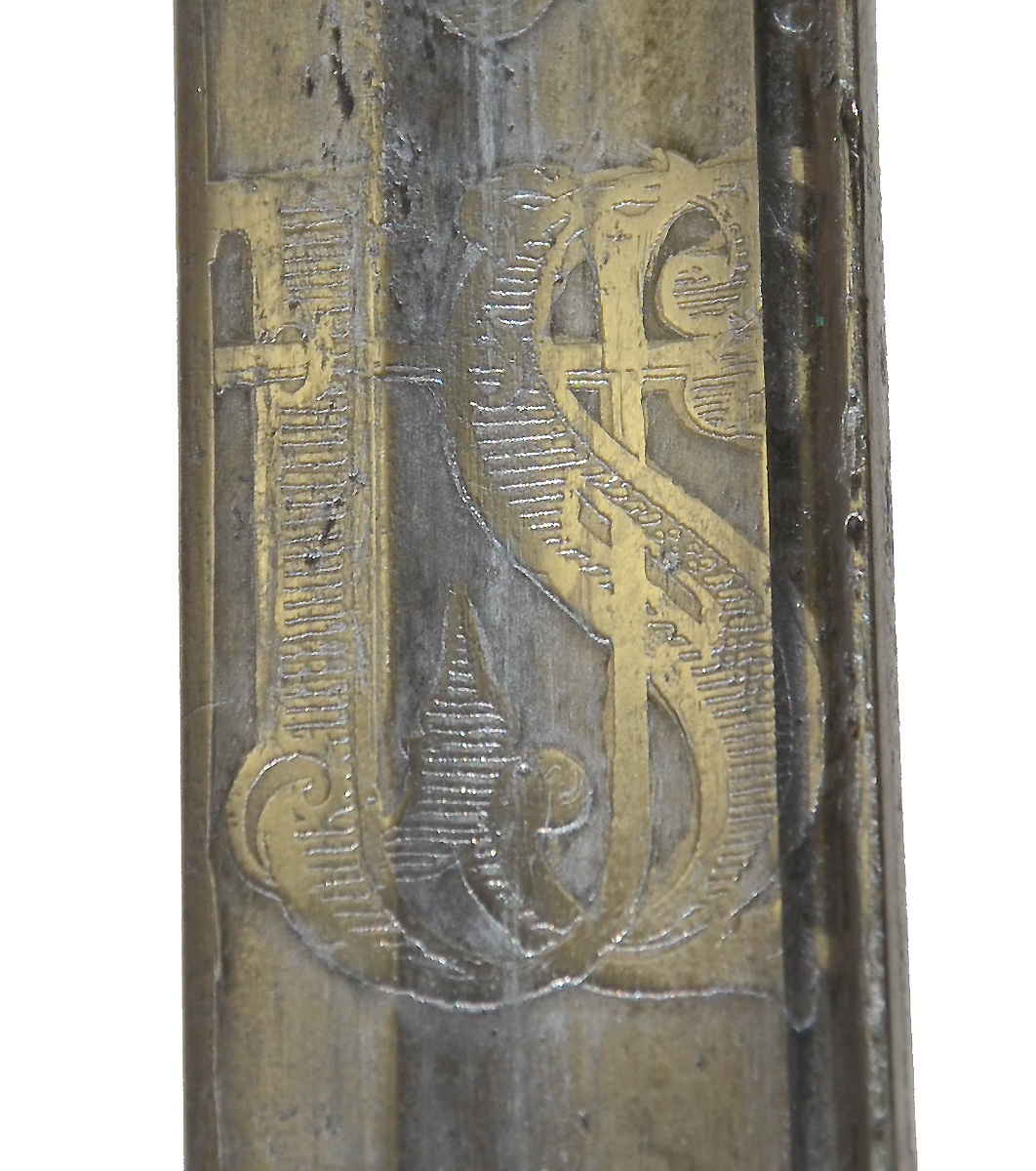

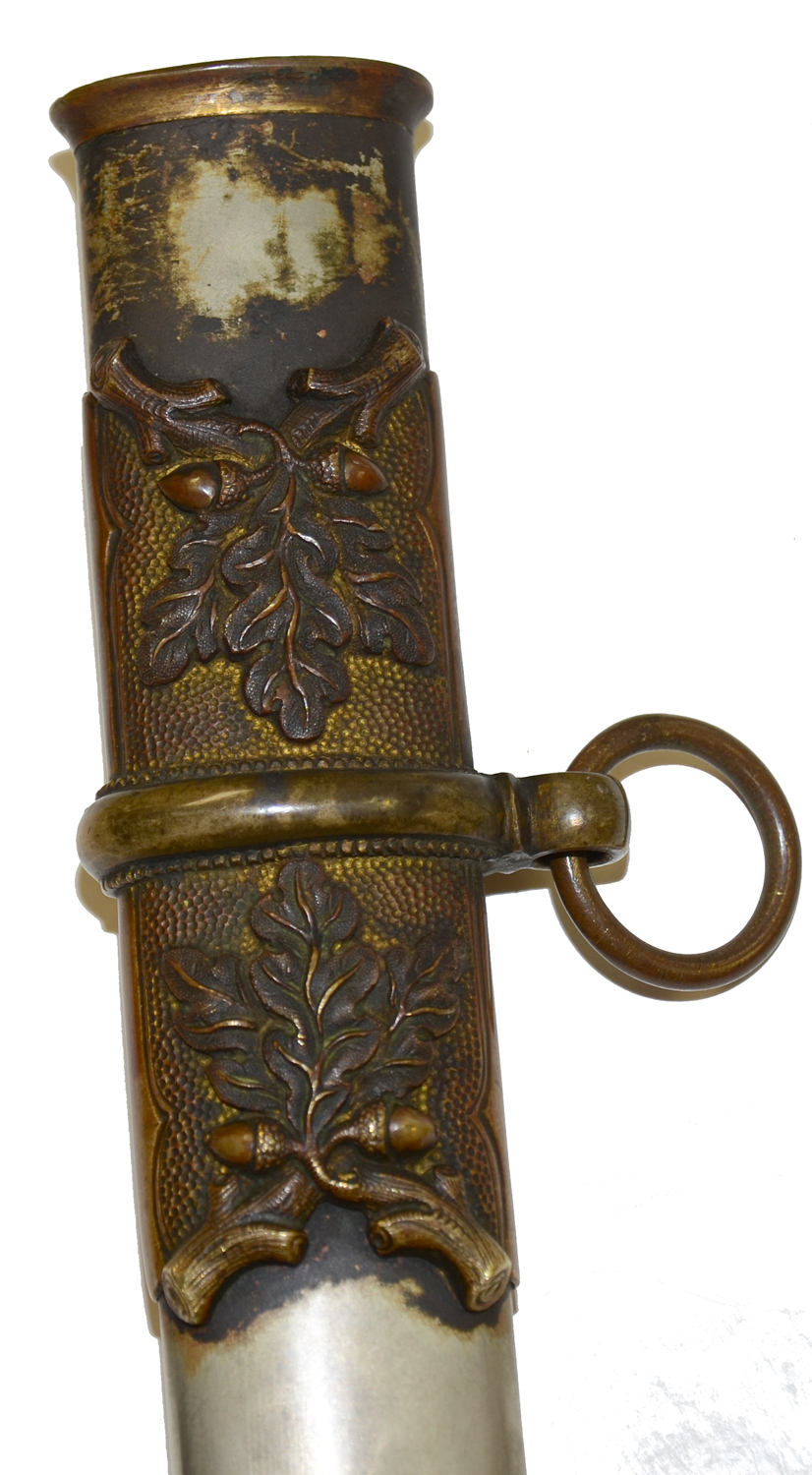
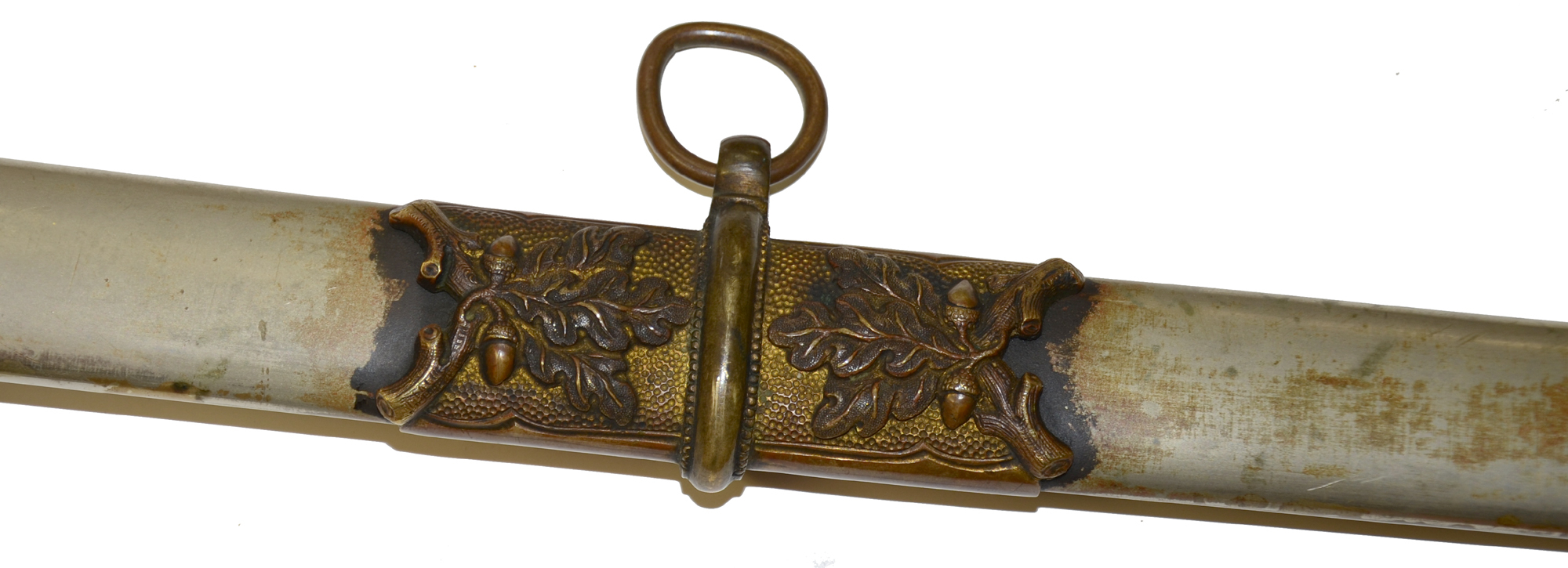

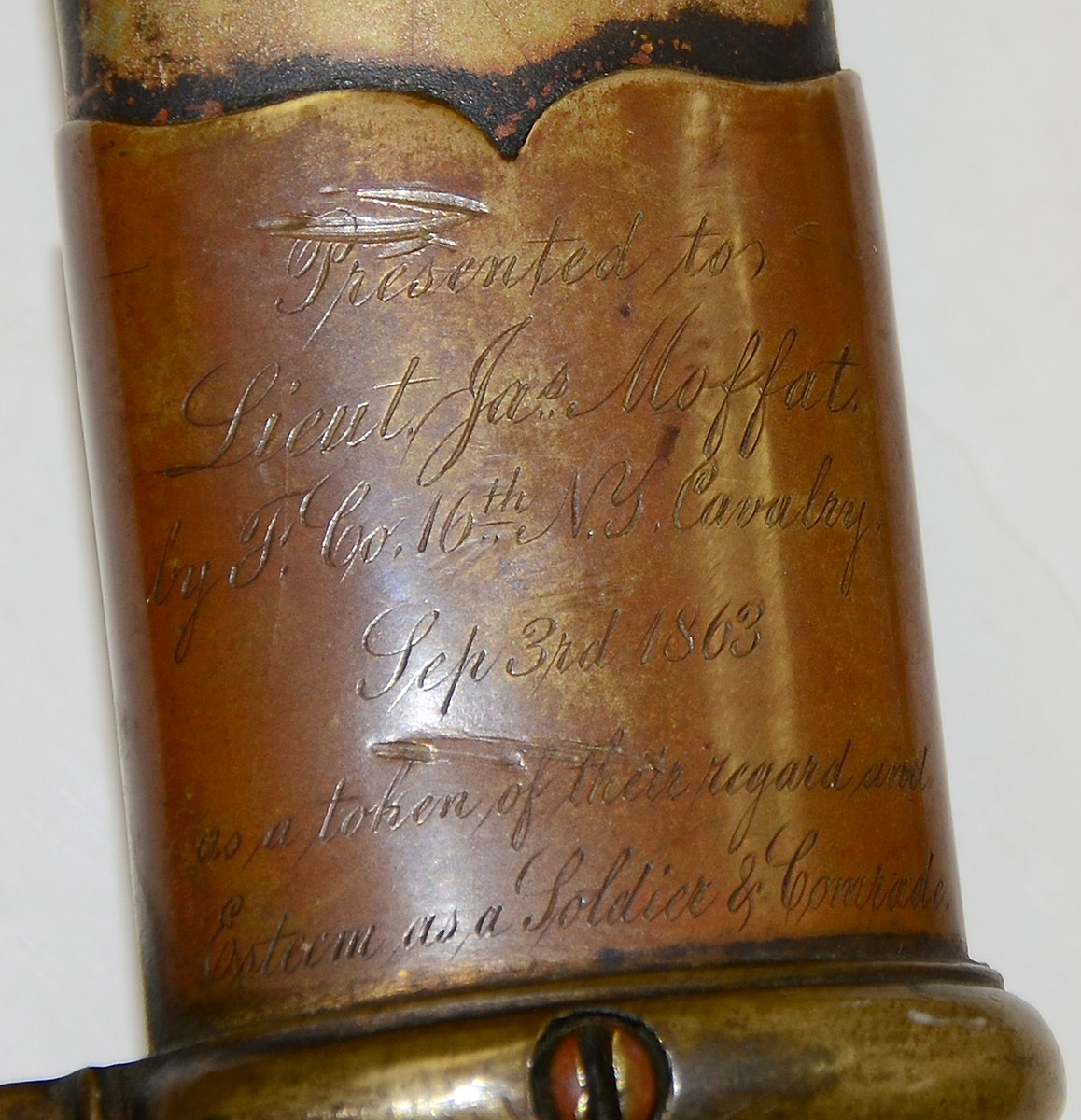
$5,750.00
Originally $7,650.00
Quantity Available: 1
Item Code: 870-653
Shipping: Determined by Method & Location of buyer
To Order:
Call 717-334-0347,
Fax 717-334-5016, or E-mail
This presentation sword has very impressive deeply cast and chased mounts and silver gripped hilt. Schuyler, Hartley and Graham assembled and sold a wide variety of swords that were often highly embellished and upgraded from regulation patterns, to such an extent that Thillmann remarks there is “no standard SH&G sword.” For this sword they used a Clauberg blade that has the Clauberg firm name and trademark standing knight deeply stamped on the reverse ricasso and the SH&G firm name and address etched in a circle on the obverse ricasso.
The hilt has fluted silver grips with columns alternating with overlapping half-moons. The brass hilt has a pommel that is very deeply cast and chased with a prominent domed cap set in a beaded and petalled base that sets it off like a gemstone. The cap is secured by four tiny screws, one of which is missing but the cap is tight and secure. The face of the pommel is deeply cast with scrolls and oak leaves with a bold US shield on the face, the scrolls of its supports echoing the curved half-moons on the silver grip. The guard likewise has deeply cast floral scrolls in openwork between guard branches. There is no cut-out US, but the three branches and widely spaced scrolls suggest a field and staff officer’s sword. Even the top edge of the quillon is deeply worked and its floral elements spill over to the upper inside edge of the counter guard. The guard is just a little loose because of a missing leather washer at the blade shoulder.
The blade itself has visible etching, but suffers from some corrosion on the flat on either side a few inches from the tip and scattered minute pitting on the lower portion a few inches up from the guard on either side. On the reverse, floral and geometric swirls lead up to a trophy of arms with a US shield, E Pluribus Unum ribbon and crossed flags. An entwined US and more floral scrolls top out the etched panel. On the obverse the circular SH&G company name and address is etched on the ricasso. Floral scrolls above and below a spread-winged eagle dominate the rest of the etched panel, but the light pitting obscures some detail, though it is very evident.
The steel scabbard body is a dull silver overall with just traces of blue next to the mounts, but the brass mounts have a deep mustard colored, aged patina that is undisturbed. On the obverse the mounts are deeply cast with crossed oak tree branches with leaves and acorns. On the drag this appears at the upper edge and the lower portion has geometric swirls and curving lines bordering stippled background sections with scrolls on the shoe portion. On the upper and middle ring mounts the oak leaves and acorns appear top and bottom. There is a narrow brass throat in place as well.
The reverse of the mounts is plain, but the upper ring mount bears a presentation reading: “Presented to Lieut. Jas. Moffat / F Co 16th NY Cav / Sep 3 1863/ as a token of their regard and / esteem as a soldier and comrade.”
James Moffat enrolled at age 21 at Albany to serve three years and mustered in as First Lieutenant, Company F of the 16th NY Cavalry on July 16, 1863. He received his commission dated November 20 giving him rank from his July 16 muster. He resigned February 4, 1864. Company F was mustered into service on August 1, 1863, and left the state with three other companies under the command of the Lt. Colonel on August 18. The joined the regiment in Washington where it was assigned to the cavalry brigade of the 22nd Corps in Washington and served until late 1865, losing one officer and twenty enlisted men killed or mortally wounded in some 33 engagements plus picket duty and small skirmishes. During Moffat’s time with the regiment they were in fights at Lewinsville, Bristoe Station, and near Blue Ridge Mountain in Virginia.
The reason for Moffat’s resignation is not given in the New York records, but may have had to do with the appointment over his head of John J. Schlaefer, an officer from outside the regiment, as Captain of the company. Moffat had been the commanding officer from July 16 and was the senior and only officer in the company when they mustered in on August 1, 1863. Schlaefer was not mustered in until August 7 and may not have been well liked: he was dismissed in 1864. On the other hand, Moffat’s standing is vouched for by the saber, whose presentation by the company in September may have been taken as a slap in the face by Schlaefer. There may be a very interesting story here. There is certainly a magnificent saber. [sr] [ph:L]
~~~~~~~~~~~~~~~~~~~~~~~~~~~~~~~~~~~
THIS ITEM, AS WITH ALL OTHER ITEMS AVAILABLE ON OUR WEB SITE,
MAY BE PURCHASED THROUGH OUR LAYAWAY PROGRAM.
CLICK HERE FOR OUR POLICIES AND TERMS.
THANK YOU!
Inquire About NON-REGULATION SILVER GRIPPED PRESENTATION SWORD BY SCHUYLER, HARTLEY & GRAHAM - LT. JAMES MOFFAT, 16TH NEW YORK CAVALRY
Most Popular
Historical Firearms Stolen From The National Civil War Museum In Harrisburg, Pa »
Theft From Gravesite Of Gen. John Reynolds »
Selection Of Unframed Prints By Don Troiani »
Fine Condition Brass Infantry Bugle Insignia »
Large English Bowie Knife With Sheath 1870’S – 1880’S »
Imported (Clauberg) Us Model 1860 Light Cavalry Officer's Saber »
featured item
CIVIL WAR COMMODORE’S UNDRESS FROCK COAT OF SILAS H. STRINGHAM, USN: LEADER OF THE FIRST COMBINED OPERATION OF THE UNION NAVY AND ARMY IN THE CIVIL WAR; VICTOR OF THE BATTLE OF HATTERAS INLET BATTERIES
Fought on Aug. 28-29, 1861, little more than a month after the Union defeat at Bull Run, the capture of Forts Hatteras and Clark on the outer banks helped restrict Confederate blockade running, enabled further operations on the North Carolina coast,… (1179-504). Learn More »


